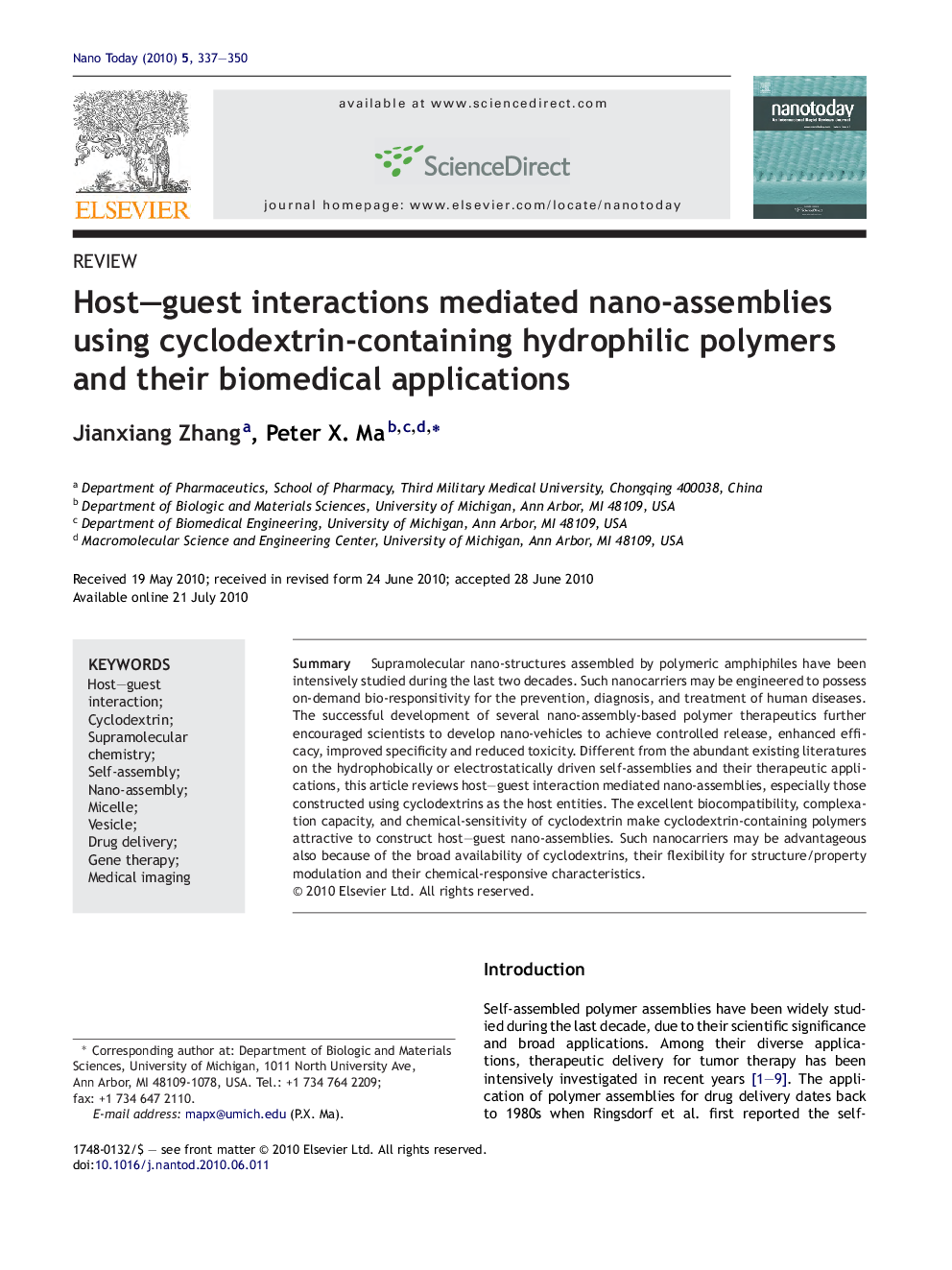| Article ID | Journal | Published Year | Pages | File Type |
|---|---|---|---|---|
| 32407 | Nano Today | 2010 | 14 Pages |
SummarySupramolecular nano-structures assembled by polymeric amphiphiles have been intensively studied during the last two decades. Such nanocarriers may be engineered to possess on-demand bio-responsitivity for the prevention, diagnosis, and treatment of human diseases. The successful development of several nano-assembly-based polymer therapeutics further encouraged scientists to develop nano-vehicles to achieve controlled release, enhanced efficacy, improved specificity and reduced toxicity. Different from the abundant existing literatures on the hydrophobically or electrostatically driven self-assemblies and their therapeutic applications, this article reviews host–guest interaction mediated nano-assemblies, especially those constructed using cyclodextrins as the host entities. The excellent biocompatibility, complexation capacity, and chemical-sensitivity of cyclodextrin make cyclodextrin-containing polymers attractive to construct host–guest nano-assemblies. Such nanocarriers may be advantageous also because of the broad availability of cyclodextrins, their flexibility for structure/property modulation and their chemical-responsive characteristics.
